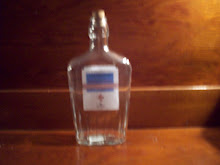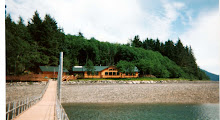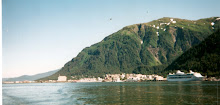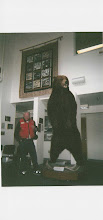Wednesday, April 20, 2011
The Northern Lights
See Terje Sorgjerd's video.
by Robert L. Gisel
While Alaska has its reputation as viewing grounds for the enthralling phenomena of the Northern Lights, any of the far north countries in the winter will do. In this case the video is of Russian Northern Lights, which they can now share with us since the Iron curtain came down. Alaska has a lot in common with its former owners including the whole array of Arctic climate phenomena.
Alaska doesn't have a monopoly on the Northern Lights as these can be viewed from any of the far north countries. Alaska was once Russian territory so sharing this video from there is apropos. The photographer Terje Sorgjerd shot the well executed video in Russia. The light show itself is exceptional, one of the best I have ever seen even though this is a compilation of a week's nights.
The Aurora Borealis, known as the Northern Lights, come out to play most often during the equinox, far north and very cold climes. Terje says it is 70 degree latitude north and -25 degrees Celsius. The northernmost tip of Alaska is about latitude 68 while Arctic circle is at 66 and change. Minus 25 Celsius is only minus 14 Fahrenheit, which is, to me, is an average winter day in Anchorage.
The Northern Lights are basically electrical storms outside the atmosphere of earth. For the layman you could think of it as a sort of sheet lightening in the ionosphere around the magnetic poles. Like a magnet pulls in metal shavings, the magnetic poles of the earth draw in toward the north and south poles hot flashes of solar energy, called solar storms. In the magnetosphere, magnetic field of earth, this turns into a visible energy, basically colored light. In short, it's a hell of a show.
This video of the Lights I would visually date in early winter, October or November, or near the end. Notice that the sun in the first video sequence moves along the horizon, that is to say, it doesn't sink it a perpendicular arc as we are used to in the States. There is some daylight but not a very long day. The tag says one month ago. March.
Many a night in Alaska I would find myself out on the lawn in shirt sleeves gawking at the aurora with the neighbors doing the same. It is an unforgettable phenomena to say the least. Nostalgic, I'd have to say.
Google search reveals the Northern Lights is also an American Progressive bluegrass band with as many fluctuations in its make up as the Alaska Northern Lights.
Shooting star and moon watching have become so mundane by comparison I'd recommend a trip north just to see the Northern Lights for yourself.
[]
Home:
Scroll the blog.
Thursday, April 7, 2011
Close Up Whale Watching

by Robert L. Gisel
Watching for whale can sometimes reap a spectacular event, like this one, with no guarantee of a repeat performance.
The usual way to watch whales is from the safety of a local tour boat or from a cruise liner. A kayaker in Katlian Bay near Sitka, Alaska found himself viewing one from the whale's mouth. He must have decided he'd wanted to watch whales from up close and you know how that goes; you have to be careful what you ask for as you may just get its literal rendition.
Seems he ventured into a herring ball at the same instant a whale breached to scoop up the herring. The end result was to be straddling the gaping wide open mouth. He reported "Paddle fast" was his thought just then.
He should have seen it coming. The usual reasons herring will swarm in a tight ball are two-fold. One, is that a school of herring will come together is a tight ball for protection against a salmon siege. This time of the year early king salmon would be arriving in Sitka waters so this is one explanation. The other is that a whale will circle a school and send up a curtain of bubbles out his blow hole. The Herring school will feel trapped and ball up in a tight packed swarm for protection, except the next action is for the whale to breach and scoop up the herring. Either way the paddler should have seen the circle of bubbles, quite noticeable in calm waters like this, or at the least he should have seen the swarm of the herring ball on the surface, visible in the picture.
Note this in your lesson book for Alaska survival tips, along with datums like don't eat yellow snow. Don't paddle your kayak into a herring ball.
The danger to the kayker is probably less than it looks. Whales don't eat objects like a boat and he is more likely to spit out than chew up the unsuspecting kayak. The whale was no doubt as surprised as the kayaker. It was a pretty composed photographer that caught this shot, though.
One other scenario is that the boater, who is a local Sitka Dentist, was trying to drum up business. In that case he should know that whale don't have teeth, only baleen. And no health insurance. It is a nice publicity stunt for a dentist who can handle any mouth.
Go ahead and take that trip to Alaska you've always wanted, but don't expect to get this close to the action.
[]
Home:
Scroll the blog.
Subscribe to:
Posts (Atom)











